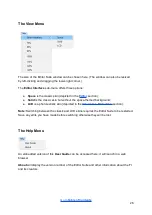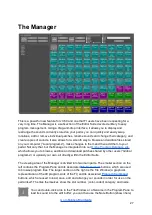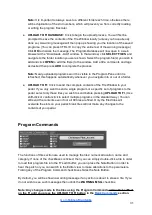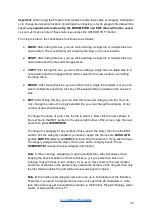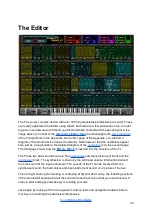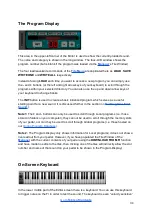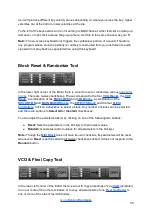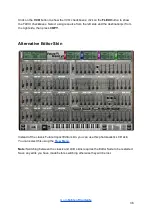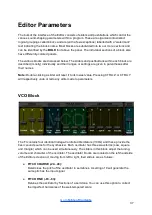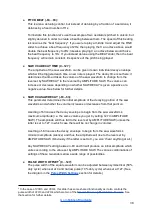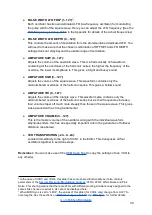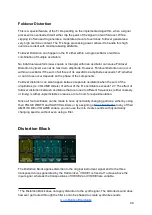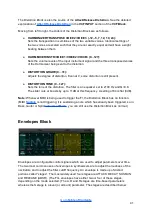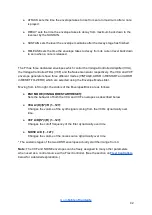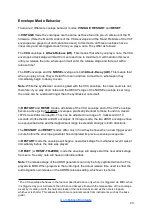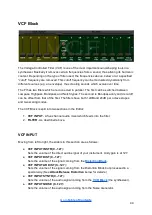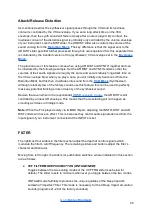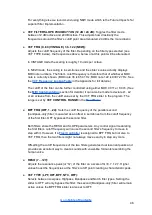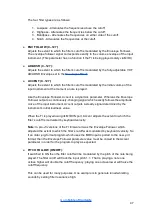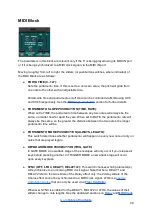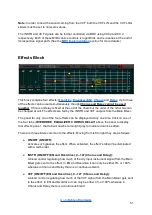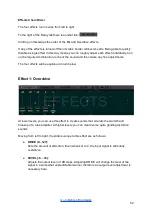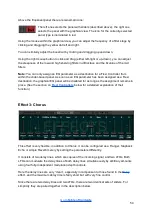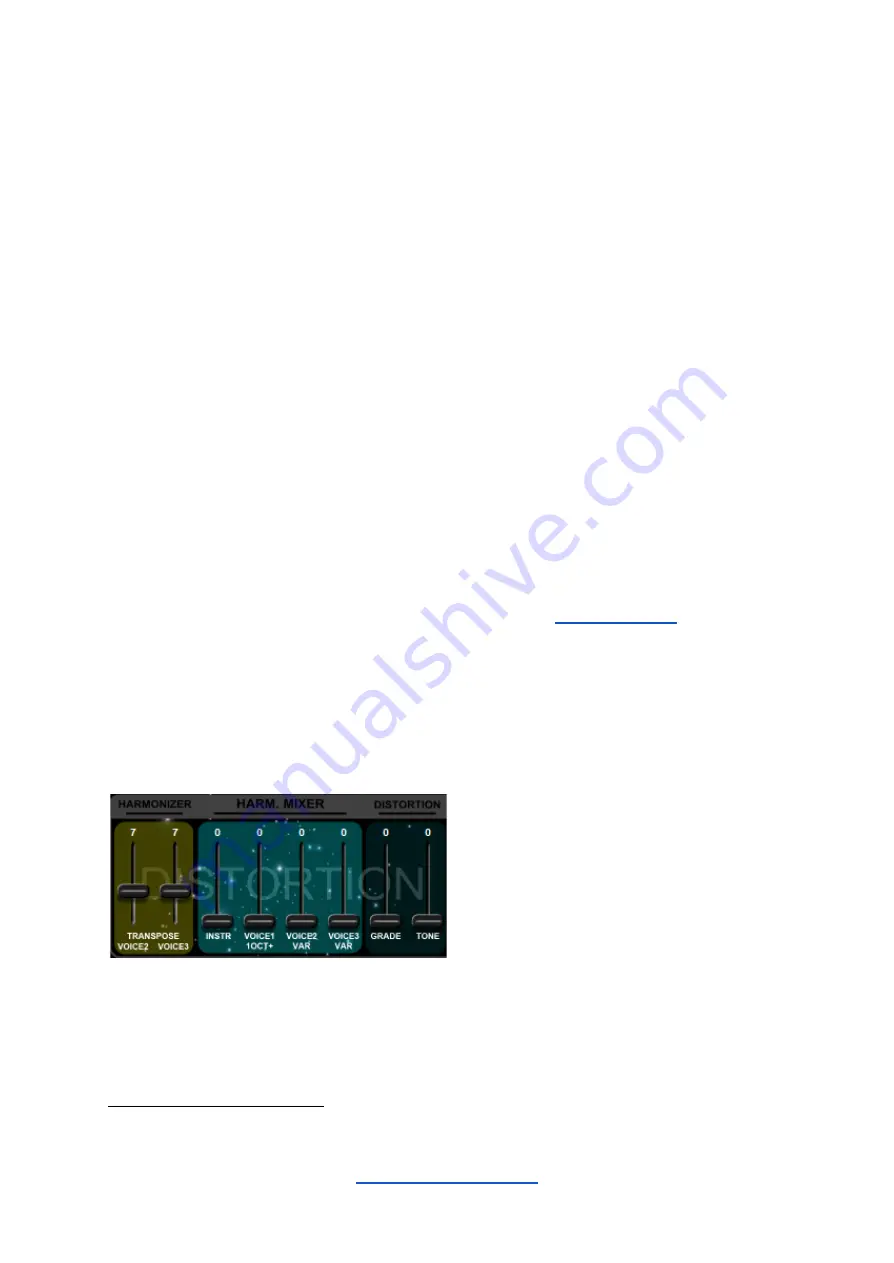
Foldover Distortion
This is a special feature of the FI. Depending on the implemented algorithm, when a signal
processor is over loaded it will either clip the peak of the signal or it will fold over. While
clipping is often used to generate a moderate amount of overtones, foldover generates a
very high overtone content. The FI’s huge processing power allows it to handle this high
overtone content with minimal aliasing artefacts.
Foldover Distortion can happen in the FI either within a single oscillator or within a
combination of multiple oscillators.
No individual waveform (saw, square or triangle) within an oscillator can cause Foldover
Distortion
by itself
, even at its maximum amplitude. However, Foldover Distortion
can
occur
within an oscillator if the sum of all three of its wave forms’ amplitudes exceeds 127; whether
or not it
does
occur depends on the phase of the components.
Foldover distortion can also happen between separate oscillators when the sum of the
amplitudes (i.e. VOLUME sliders) of all four of the FI’s oscillators exceeds 127. The effect of
foldover distortion between oscillators that are tuned to different frequencies (either coarsely
or finely) is rather unpredictable so leaves a lot of room for experimentation.
Since all four oscillators can be made to have dynamically changing portions, either by using
their PULSE WIDTH and SAW VCA sliders or by assigning a
to any of their
AMPLITUDE or VOLUME sliders, you can use them to create sounds with dynamically
changing spectra, without even using a filter.
Distortion Block
The Distortion Block applies distortion to the original instrument signal and to the three
transposed voices generated by the Harmonizer. VOICE1 is fixed at 1 octave above the
8
input signal, whereas the transpositions of VOICE2 and VOICE3 are variable.
8
The Distortion Block does not apply distortion to the
synth
signal. The distorted sound does
however get routed through the filter so can be shaped to create synth-like sounds.
40

